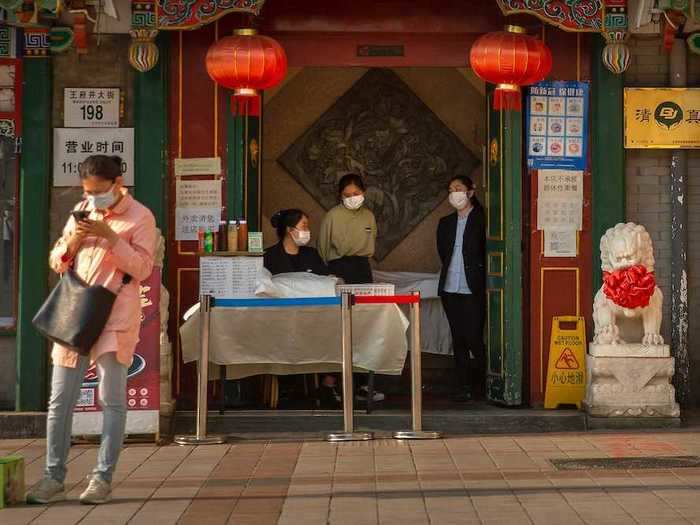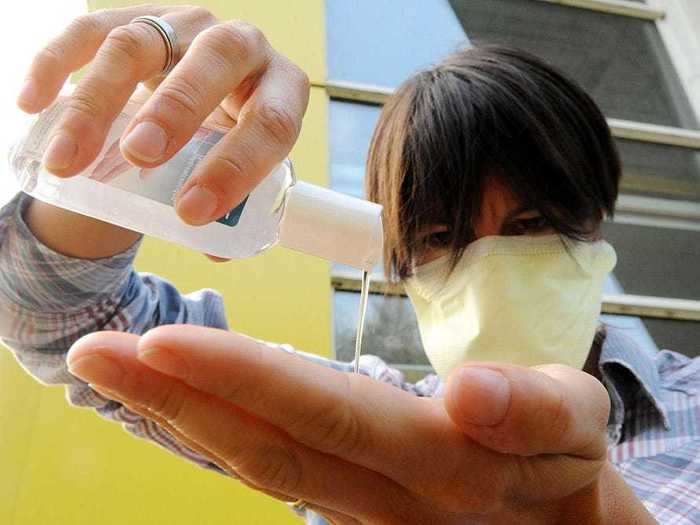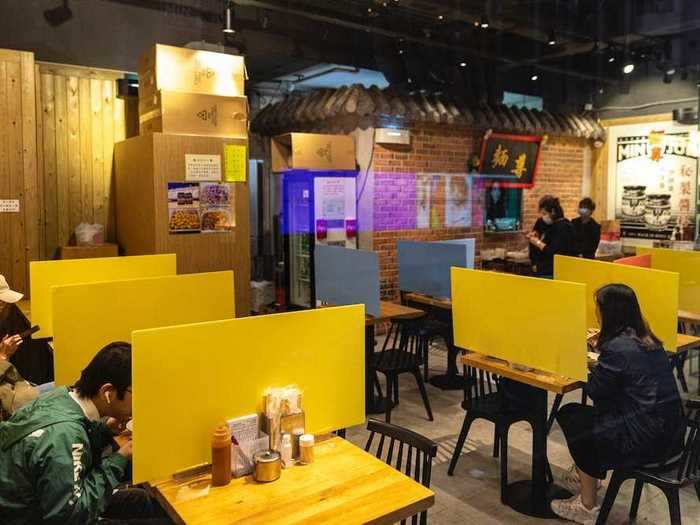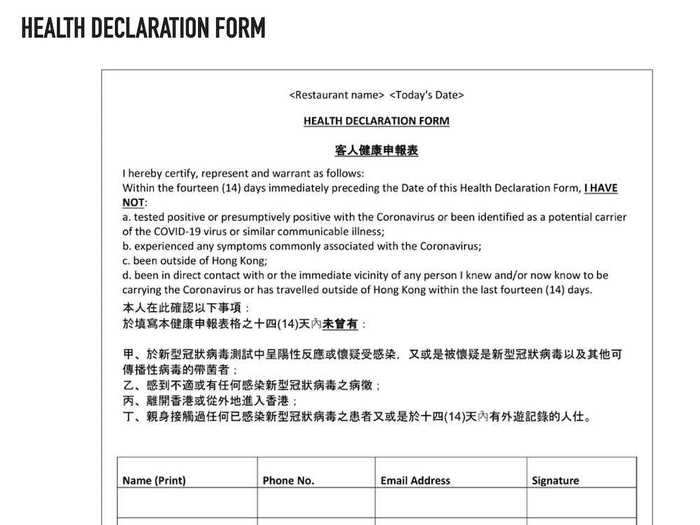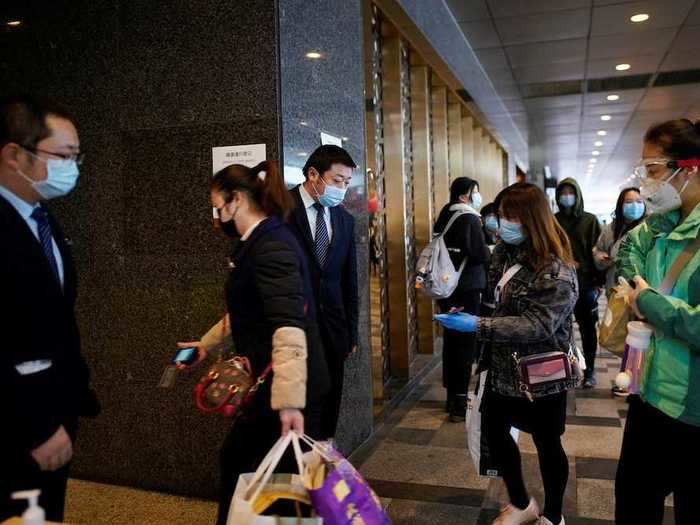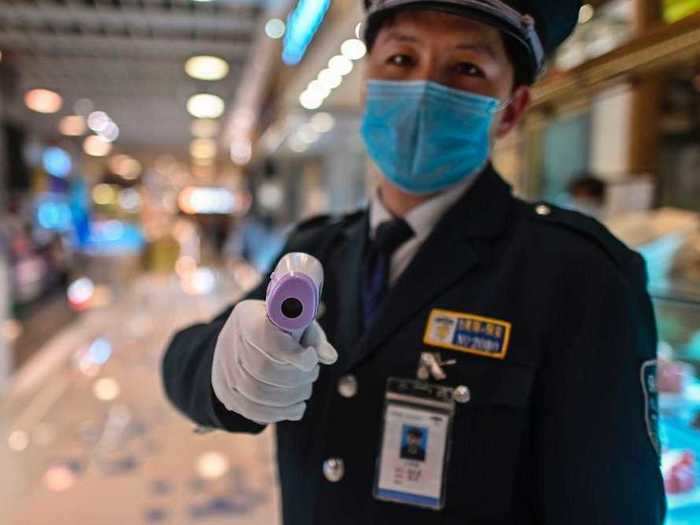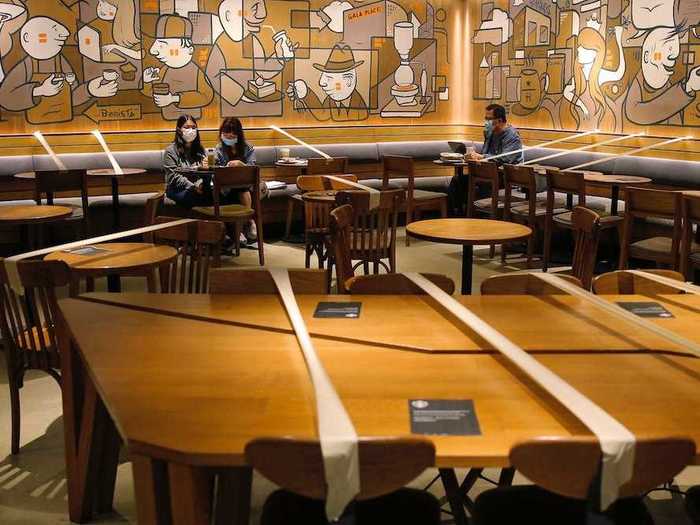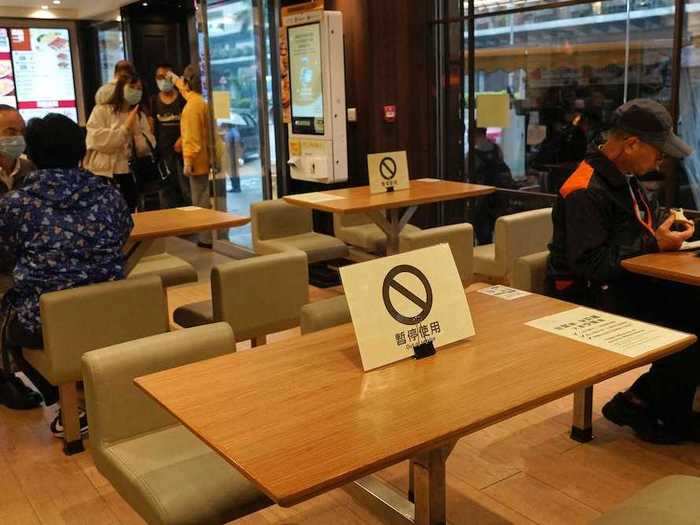Tables and chairs are taped for the social distancing law enforcement to help curb the spread of the coronavirus at a Starbucks coffee shop in Hong Kong.AP Photo/Kin Cheung
- Restaurant owners in the US are wondering what life will look like when the country fully emerges from lockdown.
- Many are looking toward China for direction as it slowly resumes normal life and dining out becomes an option again.
- Restaurants across China and Hong Kong have made drastic changes to the dining experience, and in many places, temperature checks, masks, and plastic partitions between diners are now the norm.
- Visit Business Insider's homepage for more stories.
As normal life slowly resumes in China, the rest of the world is looking toward the east for pointers on what day-to-day life will look like elsewhere after the lockdown restrictions are lifted.
This includes how consumers will dine out in the future and what restaurants need to do to make the experience safe for both customers and workers.
Photographs taken in cities across China and Hong Kong reveal how drastically different it is to eat out now that businesses are reopening. Temperature checks, caps on restaurant capacity, and social distancing markers have become the norm in many places, for example.
Here's what might lie ahead for the US:
Read the original article on
Business Insider
Masks become the norm
Clerks wear face masks to prevent the spread of the new coronavirus as they wait for customers at the entrance to a restaurant in Beijing, Tuesday, April 28, 2020.
AP Photo/Mark Schiefelbein
Masked servers and diners have become the norm in Asia. In Hong Kong, customers are required to wear a mask in a restaurant when they are not eating or drinking.
In some parts of the US, which are lifting lockdown restrictions, masks are mandatory for restaurant workers.
The National Restaurant Association, which represents over 380,000 restaurants in the US, published a set of guidelines in April to give restaurants guidance about reopening and recommended that masks be worn even if they are not mandated by local governments.
Hand sanitizer on tap
Getty
Rigorous hygiene routines will be vital in encouraging customers to come back into restaurants.
"Guests are very sensitive to hygiene, and anything that even looks messy will translate to unclean in their minds, so everyone's uniforms, hair, nails, any surfaces guests can see, it all needs to be tidy and spotless, now more than ever," Black Sheep Restaurants wrote in its guidelines.
Black Sheep Restaurants cofounder Syed Asim Hussain said that employees are required to wash their hands and sanitize the tables used by customers every 30 minutes; every 10 days, they also do a deep clean.
Under Hong Kong regulation, restaurants are also required to make hand sanitizer available to both guests and workers.
It's highly likely that this could become the norm in the US too. Experts also say we could see similar measures rolled out to retail stores with pop-up hand sanitizer stations becoming more prevalent in the US.
Perspex barriers between diners
Photo by Chan Long Hei/SOPA Images/LightRocket via Getty Images
Acrylic barriers have been a fixture at some restaurants in Asia from the start of the pandemic and continue to be.
These screens are becoming more prevalent at registers in grocery stores in the US and could catch on in restaurants also as they start to reopen.
Diners are asked to confirm that they haven't been infected with the virus in the past 14 days
Black Sheep Restaurants
Hong Kong restaurant group Black Sheep, which owns a string of popular restaurants in the city, recently released a set of guidelines advising its 1,000 person team on how to deal with the pandemic. These guidelines have been published publically for other restaurants to use too.
As part of these, the restaurant chain has made it mandatory for any customers to sign a health declaration form before they are able to dine. In this form, they are asked to confirm that they haven't tested positive from the virus in the past 14 days, experienced any symptoms in that time, been in direct contact with anyone who is known to be carrying the virus, or have traveled outside of Hong Kong. It also asks them to leave their contact details so if there's a confirmed case in the restaurant, the owners are able to inform anyone who has visited during that time.
"If guests decline to complete the form do not be afraid to turn them away," the company wrote, adding that they turned away more than 50 people in one night. "They may be upset in the moment, but it is absolutely the right thing to do to protect your team and your guests. It feels uncomfortable because we are in the business of hospitality but we have to understand the reality of the new world we exist in," it said.
Contact tracing
Management staff check QR codes on the mobile phones of people entering a shopping mall at its entrance in Wuhan.
REUTERS/Aly Song
In China, the government is using software, run on Alipay and WeChat's platforms, to track people's movements and prevent the spread of coronavirus.
Anyone that wants to travel around is required to fill out a health survey on the app, which depending on their health status and travel history, will then generate a color code – Green, Yellow, or Red. These codes dictate whether a person can travel freely, should stay at home and isolate, or is required to stay in quarantine.
And increasingly, malls, cafes, and restaurants in China are requiring customers to show their codes on the app before they are able to enter these areas.
Temperature checks on arrival
A guard wearing a facemask amid concerns over the spread of the COVID-19 novel coronavirus, holds a thermal gun to check the body temperature of visitors at the entrance of a restaurant area in Shanghai.
Photo by HECTOR RETAMAL/AFP via Getty Images
In Hong Kong, temperature checks for both workers and customers are mandatory on arrival and at the point of leaving the restaurant.
Temperature checks are already becoming more common in the US as restaurants reopen but haven't been mandated by the Centers for Disease Control and Prevention.
Permanent social distancing measures
Tables and chairs are taped for the social distancing law enforcement to help curb the spread of the coronavirus at a Starbucks coffee shop in Hong Kong.
AP Photo/Kin Cheung
Hong Kong restauranteurs are also required to keep a 1.5-meter space or more between each table to minimize crowding.
It's likely that similar restrictions would come to the US, building on from social distancing markers that are currently being used in stores to keep shoppers at a safe distance.
Caps on restaurant capacity and limits to group sizes
Social distancing signs are seen on tables at a restaurant in Hong Kong.
AP Photo/Vincent Yu
Limits on restaurant capacity are likely to become commonplace as more eateries open up again in the US.
In Hong Kong, restaurants are required by the government order to keep the capacity below 50% and restrict groups to four people only, for example.
Restaurant owners who don't play by the rules risk being fined as much HK$50,000 ($6,450) or face six months in jail.

